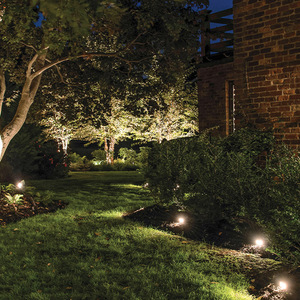Okay, I’m in Indianapolis and adding a 22′ x 24′ room addition on a crawl space to a brick house on a full basement. The access to the crawl will be from the basement. The addition will have a brick veneer, similar to the house. The architect calls for 4 foundation vents (2 west, 2 east), spray-foam insulation on the inside of the block foundation walls, batt insulation in the 12″ truss joists and plastic over the peafill in the crawl.
My insulation contractor says the foundation vents are largely useless (allowing humid air into the space in the summer and, left open, frigid air in the winter), and that the floor insulation is largely a waste of money. Thoughts?



















Replies
To comply with code, you must either add crawl vents or condition (heat and cool) the crawl. Personally, I don't like crawl vents. I agree with what your insulator said. I also like the spray foam insulation for the crawl walls. I do think that insulating the floor joists is a waste of money. If the crawl is conditioned, it should be close to the same temperature as the living space. Treat your crawl like a mini-basement.
Just my opinion,
John
J.R. Lazaro Builders, Inc.
Indianapolis, In.
If uninsulated ductwork runs in the crawl and / or plumbing is going through there, then you should treat it as a conditioned space. You'll probably need the vents for inspection (check) but I would block them as soon as you get the C of O. This from directly east of you in NW Oh. I'd foam but not fibreglas.
A great place for Information, Comraderie, and a sucker punch.
Remodeling Contractor just outside the Glass City.
Quittin' Time
Listen to the insulation contractor (but I'm biased since I used to be one)
With brick veneer siding, take good care of footings sizes, compaction of soils for bearing and non settling. Also take good care of surface drainage, good draining backfill, gutters, etc.
Many building scientists now recommend against vents. But it seems to me that they lose sight of the original intent of using a crawlspace, which is to save money. I've read Joe Lstiburek's book and can see the logic in his system. If you follow all his recommendations, however, you might as well dig down a few more feet and get a full basement because you'll be spending about the same amount of money.
Here's where the money will go. Lstiburek recommends that the crawlspace be sealed to the outside and that access be from inside the house. Think about the practical problems of that. First you have to find some place in your house to put the access (presumably a trap door). Then, you have to build it. After it's finished, every time you need to go into the crawlspace, you need to go through that space and bring any tools or materials.
Lstiburek recommends an expensive and problematic insulation system on the inside of the foundation walls. How do you attach the insulation to the masonry or concrete foundation? How do you cover it so that it meets the fire code? And how do you insure that termites aren't tunneling up the foundation behind the insulation?
After you've built the inside access and insulated the outside walls, you now have to pay for a mechanical system to move air. This, of course, has to be installed via a trap door.
There are, of course, solutions to all these problems--but they all involve you unlimbering your checkbook. In my opinion, this defeats the purpose of building on a crawlspace, which is to save money.
I'd insulate the floor, it gets cold there. You have about as many heating degree days as we do in western Montana. Heat moves, by conduction, from warm to cool. During the heating season you will lose a lot of heat across an uninsulated floor into the colder crawlspace. The insulation will lead to warmer, more comfortable floors.
If you want to estimate heat loss in the winter, call a local groundwater monitoring outfit and find the winter temperatures they measure for groundwater in wells in your area - that's a rough proxy for the temperature below your crawl space. Once you know that:
heat loss (BTU/hour) = area (in square feet) * temperature difference (in degrees Fahrenheit) divided by the R value of the insulation. Temperature difference will be about 68F-50F=18F.
If your natural gas supplier bills in therms or dekatherms, there are 100,000 BTU/therm. Do the comparison for an inch of wood (R about = 1.0) and R=19. I think you'll see how well it pays to insulate.
Your comments remind me of the bathtub I had in Anchorage, AK: its underside was completely insulated; without the insulation, bath water would have been luke warm after just a few minutes.
Even though air doesn't conduct heat/cold as readily as water does, your comments seem perfectly plausible.
-Jazzdogg-
"Don't ask yourself what the world needs. Ask yourself what makes you come alive, and go do that, because what the world needs is people who have come alive." Gil Bailie
Interesting reading. For some time I have been looking into this very subject, but as for a totally different approach I refer you to previous posts 63392.1 and 64754.2.
It seems to me although I am not a renovation specialist, general contractor, industry shill or experienced engineer that foundation vents if needed to pass inspectoin should be installed then promptly sealed to allow the space to become part of the "conditioned envelope"
This is supported by the following documents:
1) Energy Star Pilot Guide to Indoor Air Quality see section 1.21
http://www.energystar.gov/ia/partners/bldrs_lenders_raters/downloads/IAQ_Specification_093005.pdf
2) Primer on Historic Homes Renovation 3 Preservation Briefs Tech Preservation Services National Park Service US Dept of Interior This is somewhat lengthy but worth reading
http://www.cr.nps.gov/hps/tps/briefs/brief03.htm
Finally the site although previous comments were not particularily supportive of the main autor's reccommendations I encourage you to read carefully the informatino found on : http://www.advancedenergy.org
Some additional points. Neutrocrete appears to be a good idea but they are interested in franchises and do not journey far from the East Coast (personal communications). StegoWrap is pricey and dealer only. I did find ( and have misplaced a link to a manufacturere in Ohio who makes a composite substance which is sort of a junior stego wrap. The name escapes me at the moment but when I recover it I will send it along .I hope this is useful.
Either fire the architect or ask him to vent his basement. If you vent a crawl space you'll have cold floors in the winter and introduce moisture into the crawlspace in the summer. Think about it, the air in the crawl will not warm up at the same rate as the outside air and it will get wet.
Insulate the foundation walls with 2" rigid covered with drywall (for fire protection), put at least plastic or better a cement floor in there and drop in a heat run
Good luck.
Edited 6/10/2006 10:25 pm ET by MSA1
Sorry about the incomplete post but I remembered the company name for the stego like product---
Northwestern Ohio Foam Products, Inc.800-339-4850 http://WWW.THEBARRIER.COM The Barrier Under Concrete Insulation
They're making some pretty extravagant claims on the website. More foil stuff again and again and again and again and again!
As for their product for under radiant slabs.....I would like to have more than R1.35 (or less) under any heated slab. The test method is the material with air on both sides of it, not gravel/crushed stone and concrete. In the test with the somewhat shiny poly, some of the R is reflectance (not going to happen under concrete!). The foam will be compressed a bit also by the weight of concrete so the R value you actually get will not be what's claimed from testing!
The "thermal mass" claim effect is a "red herring".
Another "company performed test" will fall with scrutiny!! If they're self testing to their own criterea, can you believe it?
And I don't think they are stopping 99.98% of downward heat movement. If it sounds too good to be true.......You complete the phrase!!
ENOUGH SAID!
XPD
Thanks for your input. I did not outline any specifics on the use of these materialsso with your permission here are my thoughts.
The problem list:
1- irregular walls many voids, openings for air, insects and critters
2- lack of headroom short 14 or so inches to as high as 30 inches
3- irregular non leveled base punctuated with irregularrly placed piers for structural support
I had thought of using the Northwestern Ohio Foam products only for its vapor barrier properties. It appears as robust as Stego Wrap from a puncture resistant standpoint and the 4 foot width would make it easier to manipulate in the tight space than the correspondingly 14 width of Stegowrap. Once a vapor barrier was down on the irregular ground (I plan on continuing it up the inside of the wall for 6 to 8 inches by affixing it to the interior rough masonary stem wall with a substance like Stego Mastic.) I could construct a thermal envelope of some form of rigid foam. I would like to have this extend to the top of the rim joist.
Here is where the information is not entirely clear. I had looked at a spray foam product from DOW which seems as if it can be applied easliy. I had planned upon using the low rise variant as its tacky surface would allow THermax sheathing to stick while dealer reccommended fastening procedures were employed ie. washer/nails. The Thermax is a rated fire barrier as per information supplied on their website as well as independant testing labs. I do understand it has a foil surface but am interested in its fire barrier qualities as additional insulation value will be gained from the spray on foam. The Dow representative I corresponded with seemed a bit unsure as to the fire resistant capacities of THermax even after I forwared a spec sheet supplied by her company back to her. If the exterior portions of the rubble walls are tuck pointed in addition to the above does this plan seem feasible? I did not plan on putting down a slab or rat floor as the space is "too short" for anything but rare visits pumbing additions corrections, etc. THanks for your interest.
would you use the 2" rigid if the space is not heated?
As I understand it, if you seal it you have to condition it. If you mean would I use rigid on the walls if it were vented, then no.
Assuming GFA and central air conditioning, insulate the walls and vapor barrier the floor and slightly open ####couple of registers to condition the air.
No insluation in the floor structure above.
It doesn't get all that cold in crawl spaces in NW Ohio (I'm in them day in and day oiut year round), even with a "lot" of vents, and a conditioned crawl space won't be cold enough to make a difference (might even feel warm to your feet
Depending on your codes, you might have to have vents. So semi seal them after the CO, as Calvin said. ()Don't seal them tight - you're pushing air into the crawl and you don't want it seeping back into the house.
Fighting Ignorance since 1967
It's taking way longer than we thought